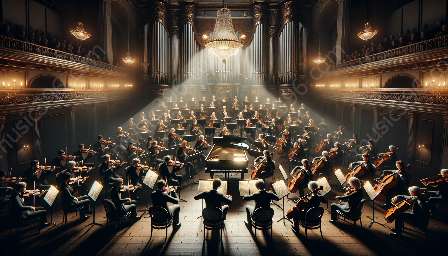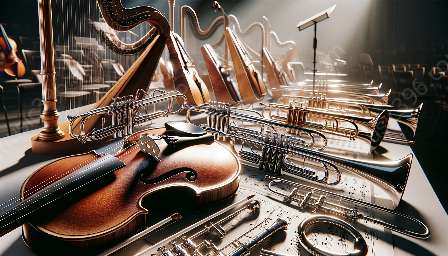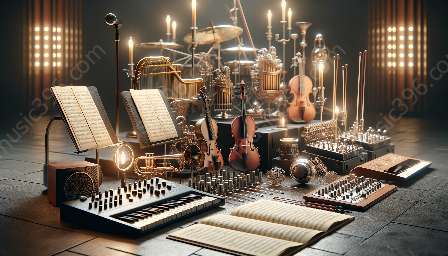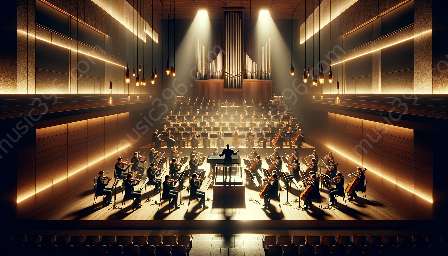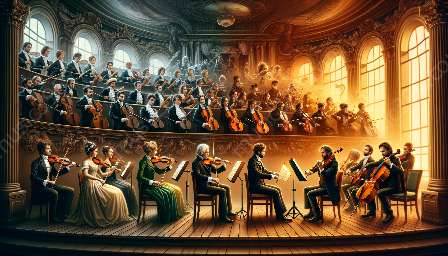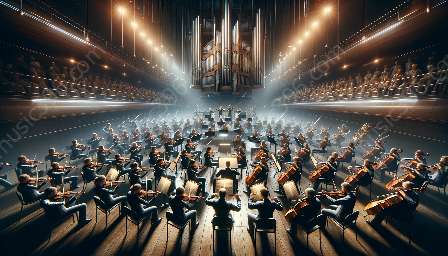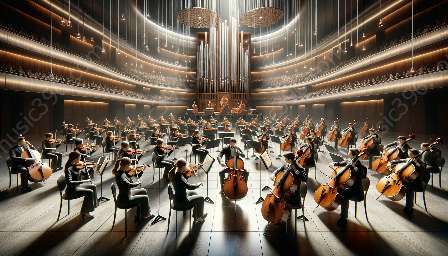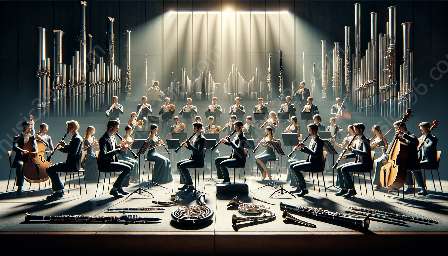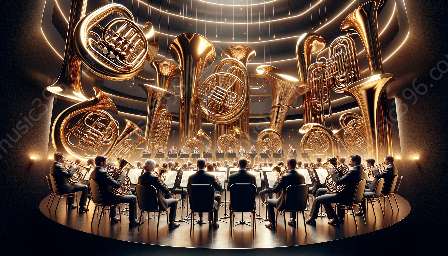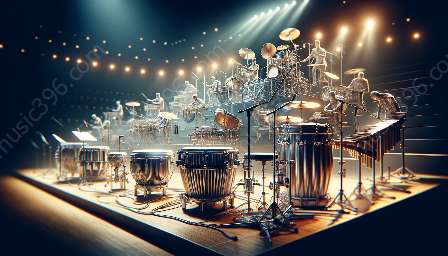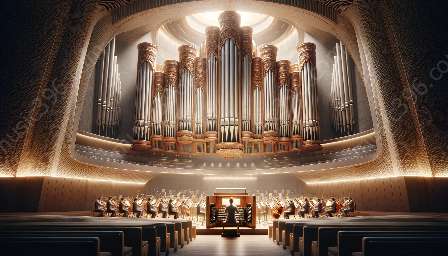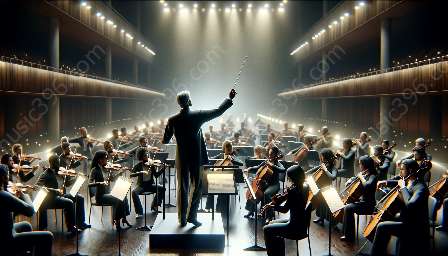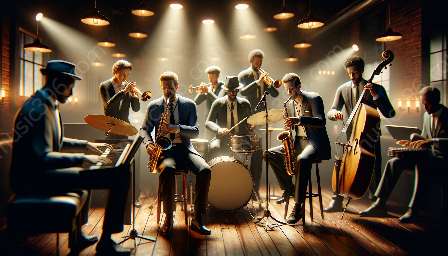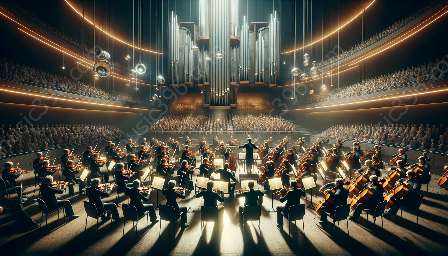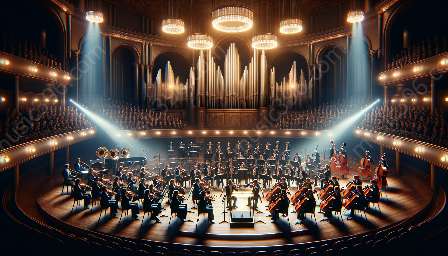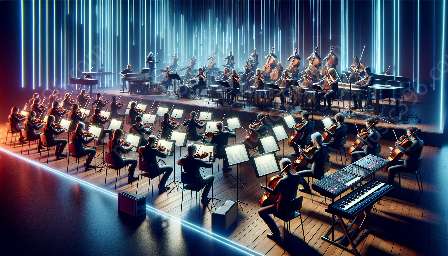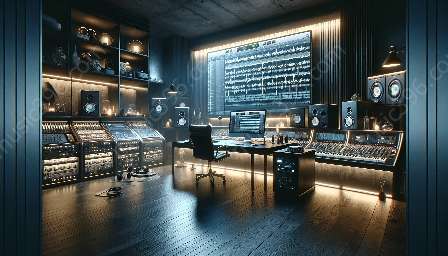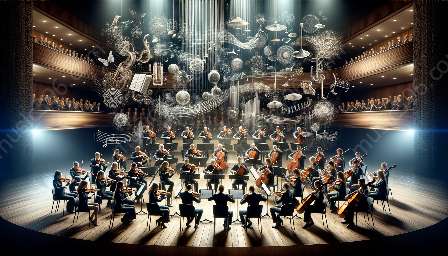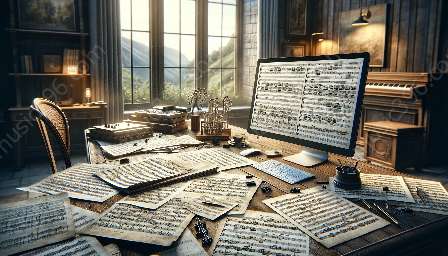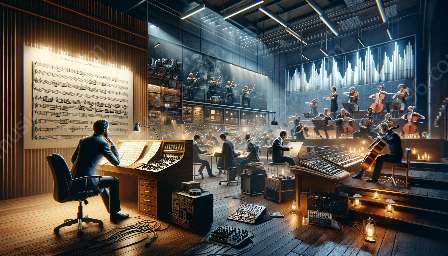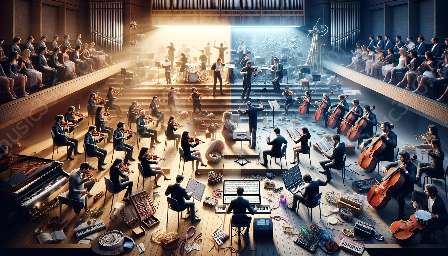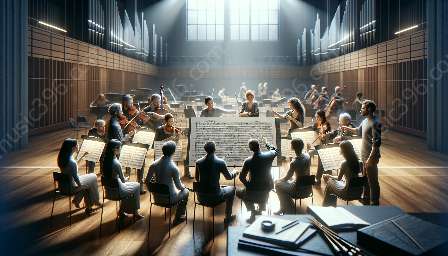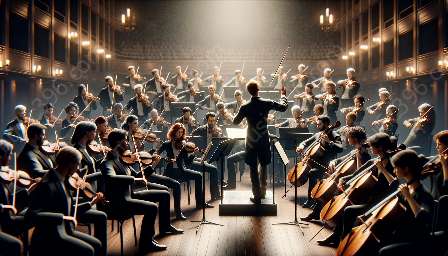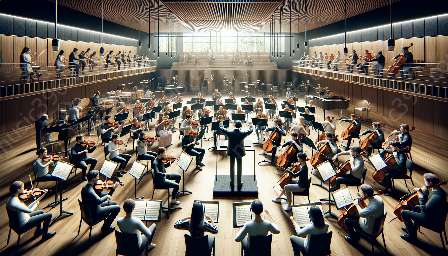Storytelling is an essential component of both film and theater, captivating audiences through the integration of multiple art forms. At the heart of this captivating experience lies orchestration, a technique that not only enhances the immersive nature of storytelling but also complements the broader use of instrumentation in both art forms.
The Role of Orchestration in Enhancing Storytelling
Orchestration is the art of arranging and organizing music and other elements to create a harmonious and complementary whole. It is often associated with music composition, where it involves the assignment of different musical parts to various instruments in an orchestra. However, in the context of film and theater, orchestration takes on a more expansive and interdisciplinary role.
Through orchestration, storytellers meld music, visuals, and narrative into a cohesive and emotionally resonant experience. The use of orchestration in storytelling allows for the seamless integration of sound and visuals with the narrative, creating a powerful immersive experience for the audience.
Understanding Instrumentation and Orchestration
Instrumentation refers to the selection and arrangement of instruments used in musical composition. This process involves choosing the specific instruments and their respective roles in conveying the emotional and thematic elements of the music. When combined with orchestration, instrumentation plays a critical role in bringing depth and richness to the storytelling in film and theater.
Orchestration, on the other hand, not only involves the selection of instruments but also encompasses the entire arrangement of all the elements involved in the storytelling process. It goes beyond the musical aspects and extends to the visual and narrative components, creating a unified and compelling narrative experience.
Layering Emotions and Themes in Storytelling
One of the most impactful aspects of orchestration in storytelling is its ability to layer emotions and themes. Through the strategic use of instrumentation and orchestration, storytellers can amplify the emotional impact of pivotal moments in a narrative, creating a profound connection with the audience.
For example, a climactic scene in a film or a pivotal moment in a play can be significantly heightened through the careful orchestration of music, visuals, and narrative elements. The combination of instrumentation and orchestration allows for the seamless integration of different artistic elements, intensifying the emotional resonance and thematic depth of the storytelling.
Capturing the Essence of Characters and Settings
Orchestration also serves as a powerful tool for capturing the essence of characters and settings within a storytelling framework. By leveraging the principles of instrumentation and orchestration, creators can evoke specific moods and atmospheres that are integral to the audience's understanding and immersion in the story.
Through the careful selection of instruments and the strategic arrangement of musical and visual components, storytellers can breathe life into characters and settings, enriching the overall narrative. Whether it's the evocation of a haunting melody to signify a character's internal struggles or the use of orchestration to establish the ambiance of a particular location, the possibilities for storytelling enhancement are extensive.
Interplay between Orchestration and Visual Storytelling
In the realm of film and theater, visual storytelling plays a pivotal role in eliciting emotional responses and conveying narrative nuances. The synergy between orchestration and visual storytelling results in a multidimensional approach to storytelling, where music and visuals work in tandem to immerse the audience in the narrative world.
The orchestration of music and visual elements can create powerful juxtapositions, synergies, and contrasts that add layers of meaning and emotional depth to the storytelling. The combination of instrumentation and orchestration allows for a seamless fusion of auditory and visual stimuli, cultivating a holistic and engaging experience for the audience.
Orchestration as a Narrative Driving Force
Orchestration in film and theater can also serve as a narrative driving force, guiding the audience through the ebb and flow of the story. Through the expert orchestration of musical and visual elements, storytellers can manipulate the audience's emotional journey, leading them through moments of tension, release, revelation, and resolution.
The careful craftsmanship of instrumentation and orchestration enables storytellers to wield the power of music and visuals to shape the narrative trajectory, creating a captivating and immersive storytelling experience. This dynamic interplay accentuates the impact of pivotal story beats and enhances the overall cohesiveness of the narrative.
Embracing the Art of Orchestration in Storytelling
The art of orchestration in film and theater underscores the symbiotic relationship between music, visuals, and narrative, elevating storytelling to new heights of emotional resonance and artistic depth. Through the integration of instrumentation, orchestration, and visual storytelling, creators can craft immersive and poignant narratives that resonate deeply with audiences.
By harnessing the principles of instrumentation in orchestration and embracing the potential of visual storytelling, storytellers can shape compelling and resonant narratives that linger in the hearts and minds of audiences long after the final curtain falls or the credits roll.

